 |
 |
 |
| |
Neurocognitive (and neuropathy)
Impairment Rate Remains High in Diverse US Cohort
|
| |
| |
16th Conference on Retroviruses and Opportunistic Infections, February 8-11, 2009, Montreal
Mark Mascolini
SEE SLIDES AT BOTTOM OF REPORT
From Jules: there was a study here at CROI linking diabetes to neurologic impairment, but this has been repeatedly found in the general population in numerous studies. In fact studies have been published finding insulin resistance associated with neurologic impairment in the general population but they didn't find this association in the CROI presented study. In the general population the metabolics are associated with vascular disease and a broad concern that can affect many organ systems: the heart, kidney, diabetes, vascular system, and the brain.
More than a dozen years into the HAART era, neurocognitive impairment remains common in the diverse US CHARTER cohort, even in people without other conditions that may affect cognitive function [1]. Impairment rates were significantly lower in antiretroviral-treated people whose CD4 count never dipped below 200. But nadir CD4 <200 was associated with cognitive impairment and the speaker Grant said we should research if such low CD4s before HAART allow permanent damage of the brain (fro Jules: I think so).
The analysis involved 1555 HIV-infected people recruited at six US university clinics regardless of neuromedical or psychiatric status. The group averaged 43 years in age and 13 years in education. Three quarters were men, 49% black, 39% non-Hispanic white, and 9% Hispanic. While 58% became infected during sex between men, 28% picked up HIV while sharing injection equipment.
Most CHARTER members (71%) were taking antiretrovirals, 14% had suspended antiretroviral therapy, and 15% remained antiretroviral naive. While 55% were taking a protease inhibitor (PI), 33% were taking a nonnucleoside, and 6% were taking both. From 2003 to 2007, use of d-nucleosides (didanosine, zalcitabine, and stavudine) dropped 63%, and PI boosting rose 40%. Overall nonnucleoside use fell 24%, but use of the efavirenz-containing Atripla rose 17%.
The group's viral load averaged 2.3 log (200 copies), 59% had a blood plasma load above 50 copies, and 34% had a cerebrospinal fluid (CSF) load over 50. CD4 count averaged 420 and lowest-ever CD4 count 174. Fourteen of 1205 people (0.9%) with an undetectable load in blood plasma had detectable virus in CSF. But 122 of 300 CSF samples (41%) with a sub-50-copy load had detectable virus when the investigators used a more sensitive assay. And detectable CSF virus correlated with worse antiretroviral penetration of the central nervous system (CNS), as determined by CNS penetration-effectiveness scores (P = 0.03) [2]. And detectable sub-50-copy load was also associated with cognitive impairment.
While 47% of the 1555 cohort members had normal neurocognitive performance scores, 21% had mild impairment, 30% moderate impairment, and 2% severe impairment. Comparing three studies that measured neurocognitive impairment--one in 1987 just before the antiretroviral era, one in 1995 just before HAART arrived, and the current study--Igor Grant and CHARTER colleagues traced a steep drop in impairment among people with AIDS from 1987 (about 80%) to 1995 (just over 50%), but no further drop-off in the current study but impairment has remained the same, no improvement, still about 50% (see slide below); so despite after starting HAART in 1995 impairment persists although there was an overall improvement from 1987 to 1995- but HAART was mostly not available until protease inhibitors were approved in early 1996. In people with less advanced HIV infection, this cross-study comparison revealed little change in neurocognitive impairment rates from 1987 to 2009.
Next the CHARTER team divided the cohort into three groups, 843 people (54%) in whom non-HIV conditions have an incidental (minimal) impact on neurocognitive performance, 473 (30%) in whom they have a contributing (moderate) impact, and 239 (15%) in whom they have a confounding (severe) impact. In the 843 people with incidental comorbidity, Grant and coworkers linked neurocognitive impairment to:
• A lowest-ever (nadir) CD4 count below 200 (P = 0.01)
• Current antiretroviral therapy versus being antiretroviral naive (P = 0.005), probably because three quarters of those with AIDS were taking antiretrovirals (due likely to prior neuropathy not HAART)
• Detectable plasma load and nadir CD4 count below 200 (P = 0.006)
In this group, the investigators saw no correlation between neurocognitive impairment and current CD4 count or current blood plasma load or CSF load.
Older age correlated closely with at least one sign of distal sensory peripheral neuropathy, with rates rising from 20% in 20-to-29-year-olds, to 40% in 30-to-39-year-olds, to 60% in 40-to-49-year-olds, to just over 70% in 50-to-59-year-olds, to almost 90% in 60-to-69-year-olds. Another study presented at this meeting found higher rates of peripheral neuropathy in people taking antiretroviral therapy now (65%) or in the past (47%) than in people naive to antiretrovirals (30%) [3]. In the CHARTER cohort, older age, current antiretroviral therapy, past d-nucleoside use, lower CD4 nadir, and a history of opiate abuse or dependence each independently predicted peripheral neuropathy.
All told, 53% of the cohort had HIV-associated neurocognitive disorder (HAND) despite the dawn of HAART. HAND was less likely in antiretroviral-treated people with an undetectable blood plasma load and no history of severe immunosuppression. But people taking antiretrovirals were more likely to have peripheral neuropathy. And despite a steep drop in prescription of d-nucleosides, 57% of the cohort had evidence of peripheral neuropathy. One third of the cohort had evidence of a brain white matter abnormality, a signal of worse neurocognitive performance.
Grant proposed that future research should examine whether earlier antiretroviral therapy--especially with drugs that penetrate the CNS--can "abort the neuropathogenic cascade."
References
1. Heaton R, Franklin D, Clifford D, et al. HIV-associated neurocognitive impairment remains prevalent in the era of combination ART: the CHARTER study. 16th Conference on Retroviruses and Opportunistic Infections. February 8-11, 2009. Montreal. Abstract 154.
2. Letendre S, Marquie-Beck J, Capparelli E, et al. Validation of the CNS penetration-effectiveness rank for quantifying antiretroviral penetration into the central nervous system. Arch Neurol. 2008;65:65-70.
3. Ellis R, Rosario D, Clifford D, et al. Persisting high prevalence of HIV distal sensory peripheral neuropathy in the era of combination ART: correlates in the CHARTER study. 16th Conference on Retroviruses and Opportunistic Infections. February 8-11, 2009. Montreal. Abstract 461.
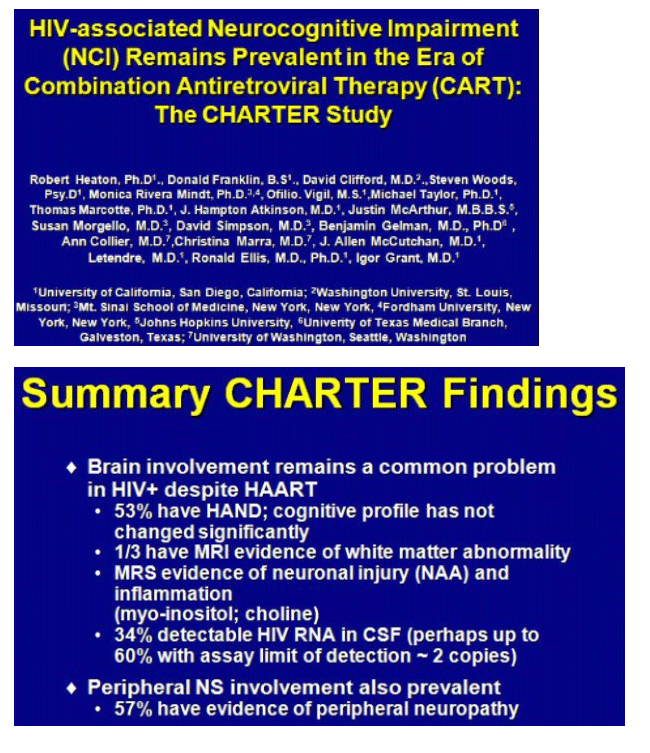
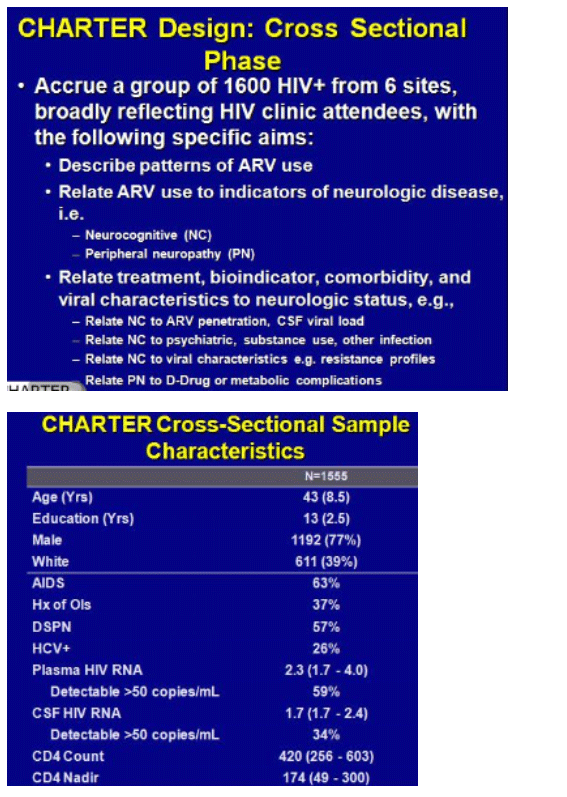


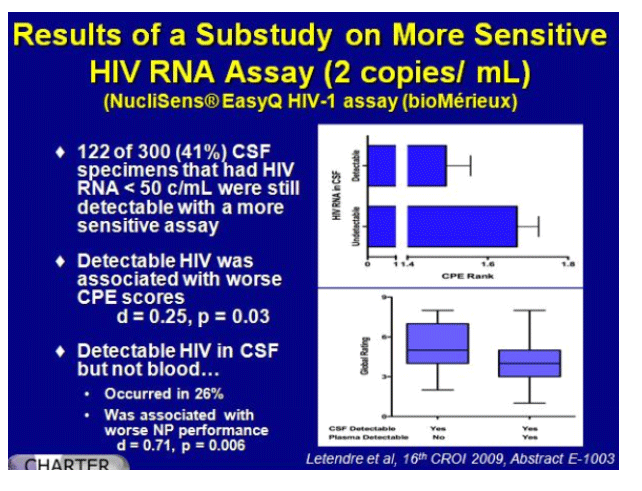
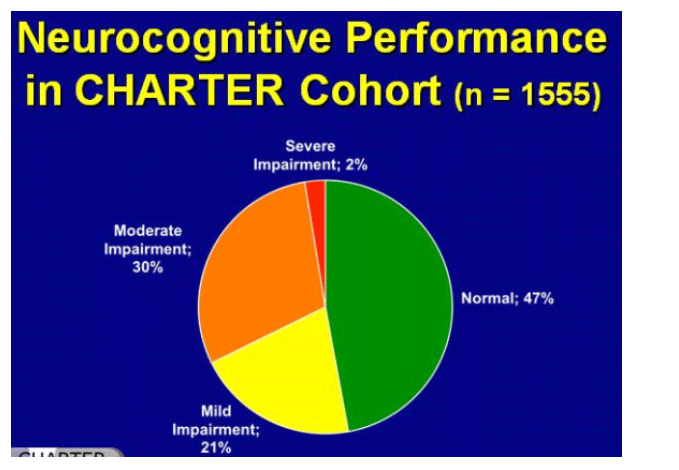
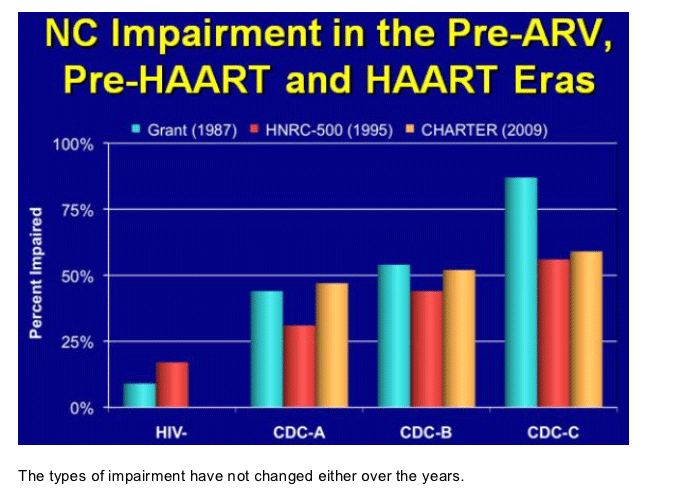
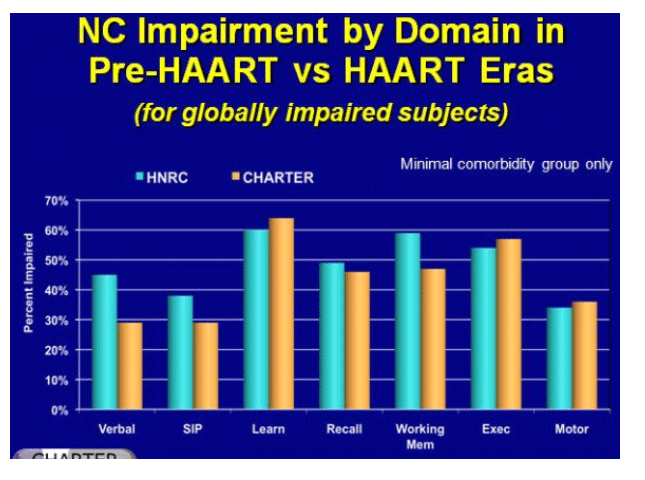


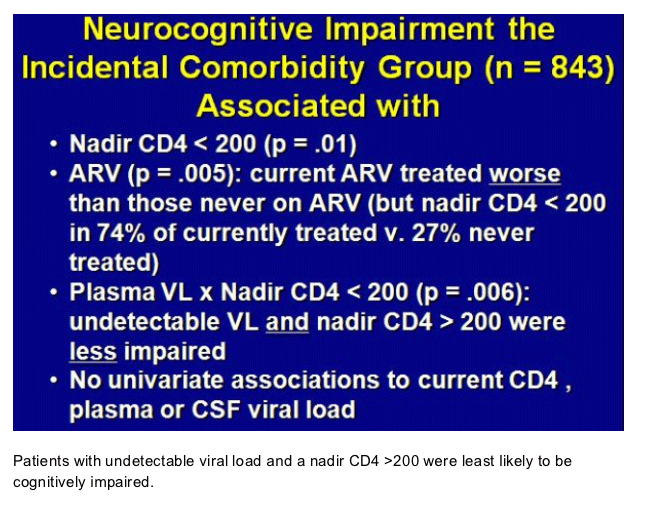

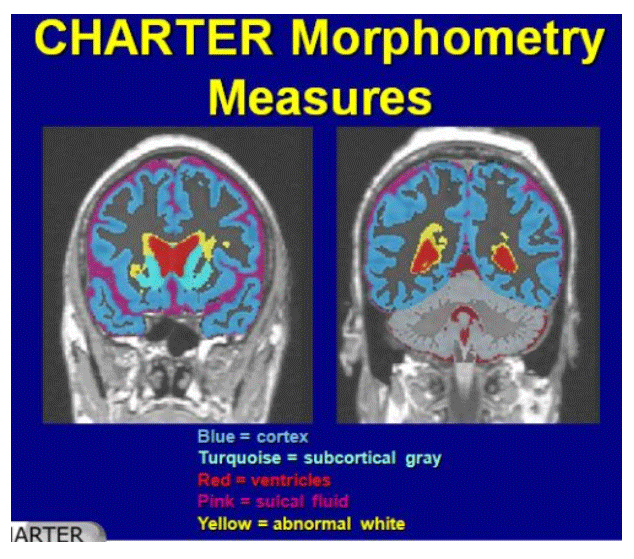
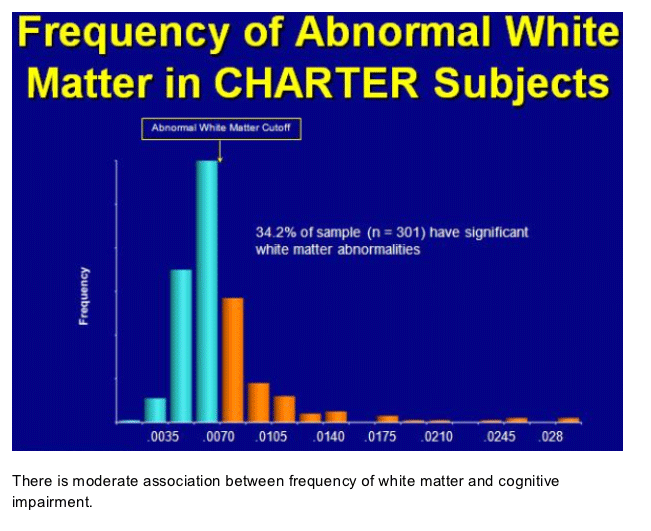
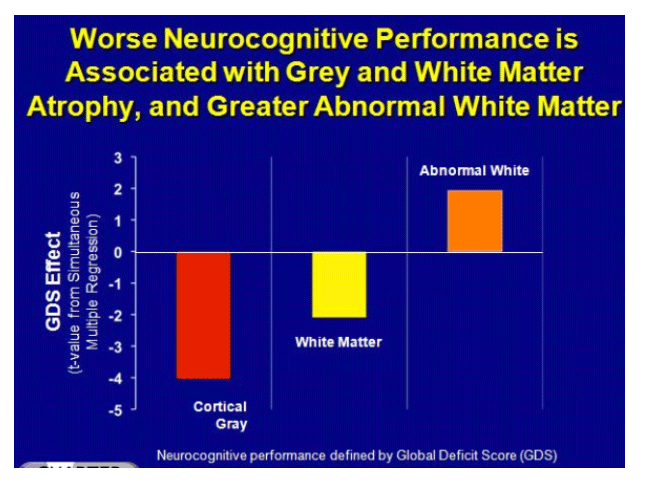
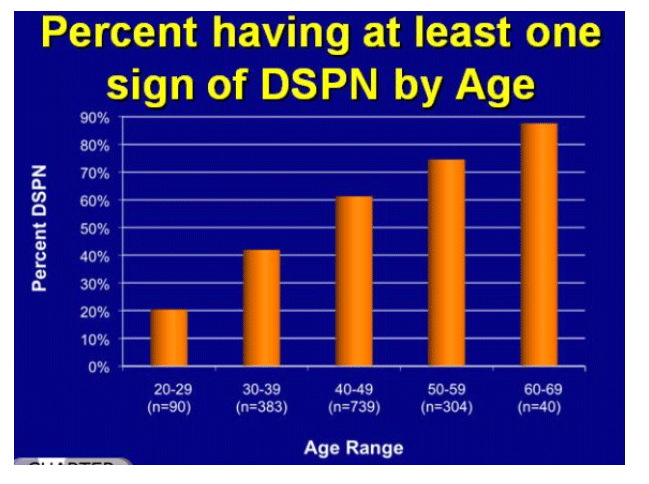
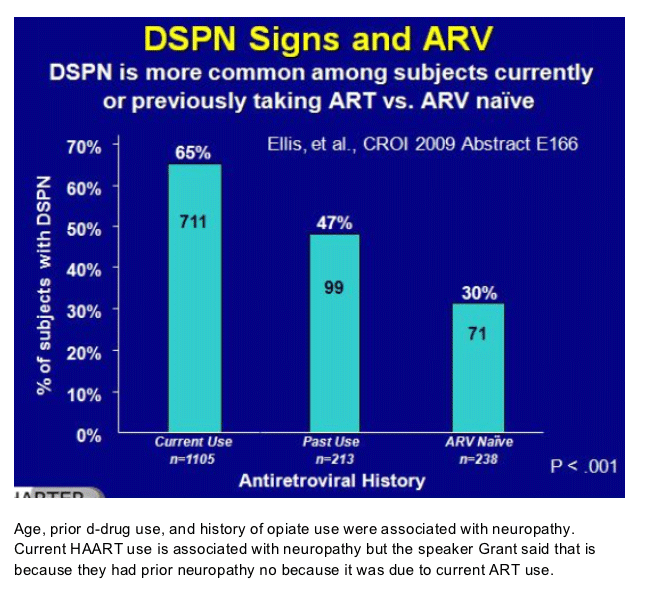
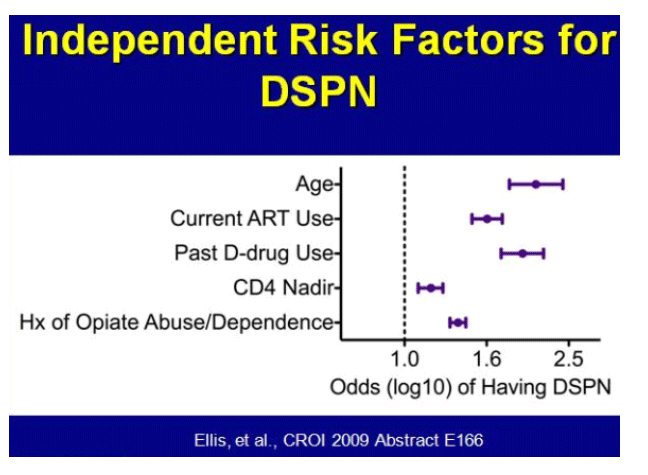
|
| |
|
 |
 |
|
|